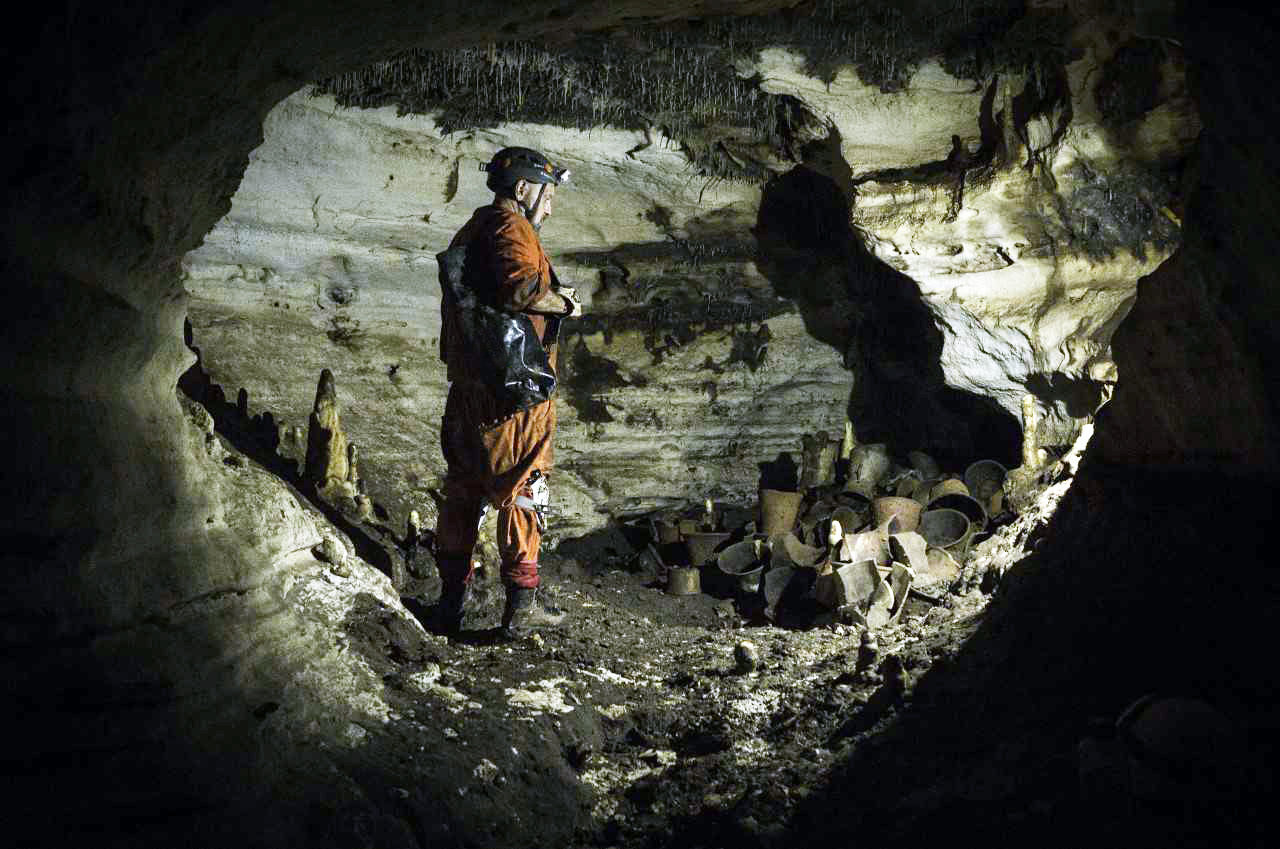A team of experts entered a cave near Chichén Itzá where they found hundreds of archaeological objects that would have been used more than 1,000 years ago in rituals.
YUCATAN MEXICO (INAH). – A cave, located 2.7 kilometers to the east under the Temple of Kukulcán, was discovered in 1966 but remained intact for 50 years as the archaeologist who was informed of the discovery decided to block the entrance.
The cave named “Balamkú” will help to better understand and perhaps rewrite the history of Chichen Itzá, in Yucatan. “The hundreds of archaeological artifacts, belonging to seven offerings documented so far, are in an extraordinary state of preservation” commented Guillermo de Anda, Director of the Great Maya Aquifer Project, the underwater exploration of the National Institute of Anthropology and History (INAH) at a press conference. De Anda was one of the first to enter the cave, after crawling for hours in the narrow tunnels that lead to it.

Guillermo de Anda, explained that because “the cave of the jaguar god” was kept sealed for centuries, “it contains invaluable information related to the formation and fall of the ancient “City of the Water Wizards”, and about who were the founders of this iconic site. I could not talk, I started to cry. I analyzed bone remains in the Sacred Cenote of Chichén Itzá, but nothing compares to what I felt when entering, alone, for the first time in that cave,” he told reporters.

Of the remains of ceramics that can be seen in the seven offerings, at least 200 censers stand out, engraved with the representation of the god of water, Chaac.
The hypothesis of the archaeologists is that the northern part of the Yucatan peninsula suffered an unusual drought towards the Late Classic (700-800 AD) and Terminal Classic (800-1000 AD) periods forced the inhabitants to make requests for rain, going to the bowels of the earth, to the underworld, where fertility deities resided, explained the INAH The censers and vessels retain charred remains of food, seeds and bones, among other elements, which will be used to date the finding and determine the rituals carried out by the Mayans.
At 400 meters from the entrance, inside the cave, some chambers begin to open, the largest is 3.8 meters high, where the large offerings were found, explained de Anda.
In a video published by the National Geographic magazine you can see archaeologists crawling through the narrow tunnels until they reach ancient artifacts, some of them broken and others covered by stalagmites.
De Anda explained that at the moment no excavations will be conducted in the cave.
The San Miguel Times
Newsroom

